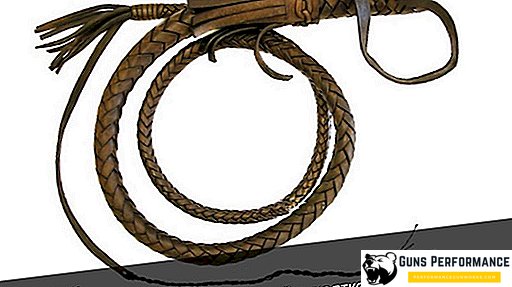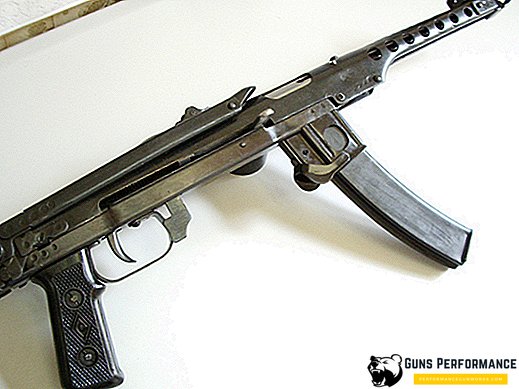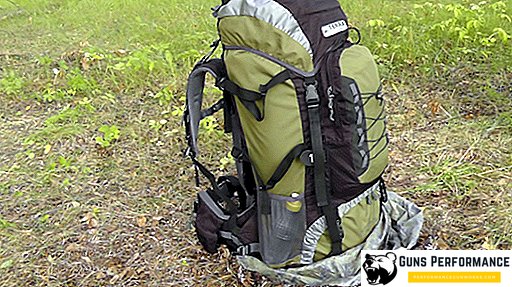
Spata is a classic double-edged sword used in the Roman cavalry from the first century BC. This is a typical armament of Celtic foot soldiers, which soon began to be used by the barbarian cavalry. It was the long swords of the Celts that served as the basis for the Roman spat, which was produced unchanged until 600 AD.
Unlike the various types of gladiuses, who were mostly piercing weapons, Spata had excellent chopping qualities, as barbarians invented it, who were Germanic and Celtic, and preferred to fight the crowd. It is for this reason that spats were not used in the Roman infantry, since they had gladiuses designed for powerful thrust. In close formation it is convenient to fight with a short sword.
Spata sword story

The first swords, in their type resembling spatu, appeared on the arms of the Roman troops around the third century BC. The direct ancestor of this weapon is the Celtic sword, which was used by all tribes with Celtic or Germanic roots. Theories about the origin of this sword often contradict each other:
- According to one version, the Celtic sword, which became the prototype of spats? - this is nothing more than a modernized gladius;
- According to another version, the Celtic sword itself served first as a prototype of the gladius, and then of the spats;
- According to the third version, the gladius and the Celtic sword developed independently of each other, and the Roman long sword appeared due to the fact that the auxiliary units consisting of barbarians stubbornly preferred to use their weapons.
During the Great Migration of Nations, it was the long Roman sword that became the basis for the famous Carolingians. Since iron armor became a real rarity during the early Middle Ages, there was no need to make a sharper convergence on the cone. Swords received wide blades, designed specifically for cutting strokes.
Spata remained popular until the 12th century, after which it evolved into a knight's sword, which was used to pierce armor. The period of the great migration of peoples was marked by a huge number of fighting skirmishes, therefore, weapons, armor and warships until the 12th century were significantly inferior to Roman counterparts in quality.
The origin of the term "Spata"

The word "Spata" is of ancient Greek origin. This term refers to a wide blade of a sword or just a wide blade. Since the development of Roman weapons was influenced by Greek culture, the name of the sword is directly related to this. Even now, the modified word "Spata" exists in many European languages:
- In Greek, this word is “spathe”;
- In French - "epee";
- In Spanish, espada;
- In Italian - “spade”;
- In Romanian and Albanian - “spata” and “shpata”.
In all these languages, this word is translated as "sword" (Spata), which means that the Roman long blade was used everywhere.
Spats use by Roman legionnaires

The first spats in the Roman army were auxiliary troops, which consisted of Germanic and Gallic soldiers. The barbarians, accustomed to chopping with long Celtic swords, did not like the gladiuses, which had good piercing properties, but were inconvenient for cutting. The length of the spat of this time was about 75 cm. After a while, noticing that the long sword gave some advantage, the following troops were armed with them:
- Auxiliary Roman cavalry;
- Roman cavalry officers;
- Roman heavy cavalry, which consisted of Germanic mercenaries. (Generally, closer to the 3rd century AD. For the Romans, serving in the army was not prestigious, which ultimately led to the collapse of the empire);
- Auxiliary Roman infantry.
Some historians believe that Spat in the times of the late empire also appeared in legionnaires, but it is unlikely that these swords could replace such a proven weapon for centuries as the gladius. In any case, spats, which were found among the ammunition of legionnaires, most likely belonged to the officers.
In written sources, such cold weapons as Spata appear in Tacitus, who described the early empire. Even then, it was casually mentioned that the soldiers of the auxiliary infantry of that era were armed with spats. The blades of the swords of that time had a length of 60 cm. Although Tacitus nowhere mentions which nationalities were auxiliary troops, an analysis of the finds of Spat in the territory of ancient Germany and Eastern Europe hints that they were Germans.
In any case, the auxiliary Roman troops were considered formally by the Romans, and later could receive Roman citizenship, if they lived to the end of military service.
An interesting fact that the Germanic or Celtic origin of the long sword can dispute is that the word Spata itself does not in any way refer to the barbarous languages of Europe of the Iron Age. There are several old Old Germanic or English words, such as "sweord", "bill", or other terms, but none of these words even remotely resembles the word "Spata."
Roman Iron Age Spats

The Roman Iron Age means the period from 1 to 400 AD in the territory of northern Europe. Although these territories were not controlled by Rome, they developed under the influence of Roman culture. It is to this era that a huge amount of Roman goods found in the swamps of Denmark, Holsteni and Schleswig belong.
About 90 swords, which were released around 200-400 AD, were found in the cache of Nydam Mose in 1858, which is located on the territory of modern Denmark. Initially, these swords were classified as Roman spats, but their number, and the Viking ship found there says that it is a local weapon. Some historians who consider the legendary Beowulf a real-life character consider the swords from the cache of Nydam to be the weapon of his warriors.
Swords of the period of the Great Migration
After the barbarians destroyed Rome, long swords spread throughout Europe. Blade weapon of the time is characterized by the following parameters:
- The length of the sword was from 71 to 81 centimeters. Such a weapon was inconvenient to work in the ranks, but for barbarians such a length was optimal;
- Small hilt swords. Such parameters were explained by the fact that the barbarians practically did not know how to fence. Judging by the remaining written sources, they relied more on strength and agility;
- Sword weight ranged from 1.6 to 2.4 kg. This weight is ideal for powerful chopping blows, which the barbarians inflicted with their modified spata;
- The tip was heavily rounded. This allowed the use of lower quality steel for the sword, without fear that the point would break;
- The width of the blade ranged from 45 to 60 mm;
- Edge - from 10 cm.
A feature of the structure of these blades is that they were intended for battle with a poorly defended enemy, since armor in those times was a rarity.
Viking Age Blades

The most popular type of spata is the sword of the Viking Age, which is also called "Caroling". These blades had downs to reduce weight and give strength to the blades. It was at this time that most swords were made by forge welding, putting a steel blade between two strips of soft iron. Cheap weapons were made of one iron.
As each clan tried to make its swords, the form of this Viking weapon was very diverse. Norwegian explorer Jan Petersen singled out 26 modifications of Viking swords. In addition to double-edged blades, single-edged swords were occasionally encountered. The length of the weapon has increased by 10 cm, and the tip has become more pronounced. This is due to the massive appearance of mail armor, for penetration of which a chopping blow was not always enough.
Norman and Byzantine swords
Norman swords began to appear at the end of the 9th century. This weapon can be called a transitional form between the Roman classical spat and the knight's battle sword. The Norman had the following differences:
- The pommel became less massive, getting the shape of a hazelnut or even a simpler drive;
- The full length of the sword was about a meter;
- The tip has become even more pronounced;
- The balance shifted closer to the tip.
One of the most famous swords of the Norman era is the weapon of Otto I, which has long been kept as a special relic. Norman swords were fully formed as a species from the 10th to the 11th century.
As for the Byzantine spats, it was more similar to the classic Roman weapons. Regarding the origin of this weapon, there are two theories:
- According to one of them, Byzantine Spata appeared as a result of the continuity of the military traditions of Greece and Rome;
- In the second, Spata is a copy of the Varangian longsword, who were massively invited to Constantinople as excellent fighters-mercenaries.
Byzantine Spata differed from the Roman classical weapons in its length and the presence of a more developed guard.

Spata's long sword is undeservedly forgotten at present, although it was he who served as the prototype for all the long swords of the European Middle Ages. Currently, paying about 15,000 rubles, you can get a modern copy of this sword.












